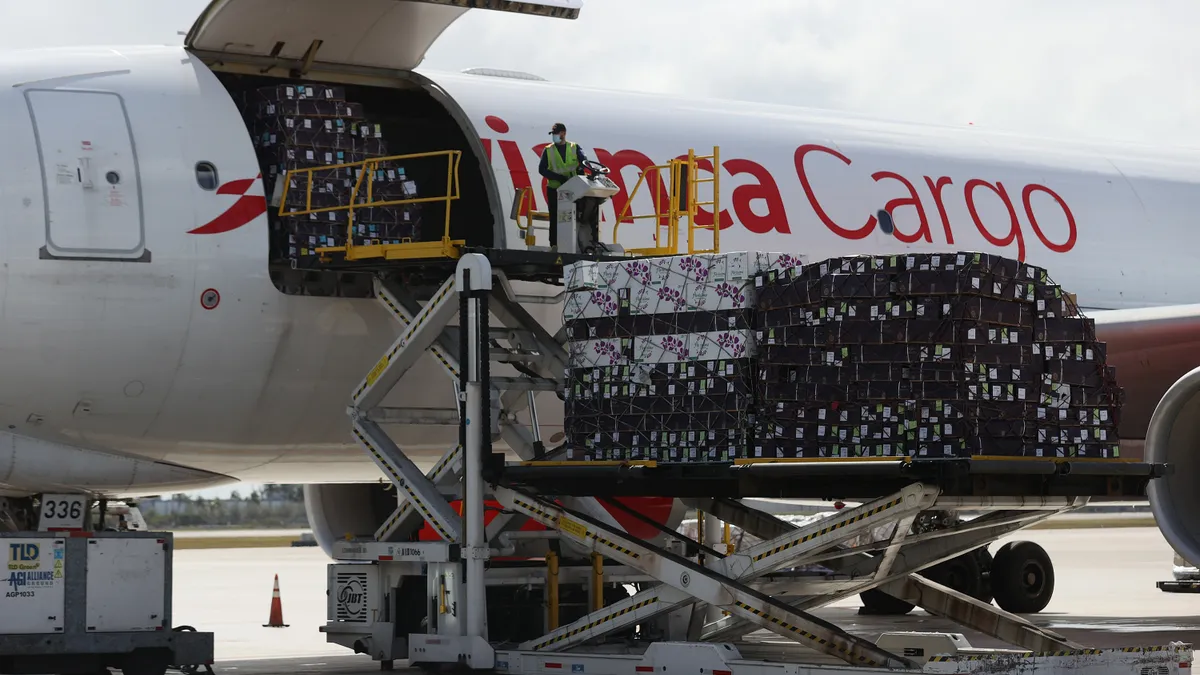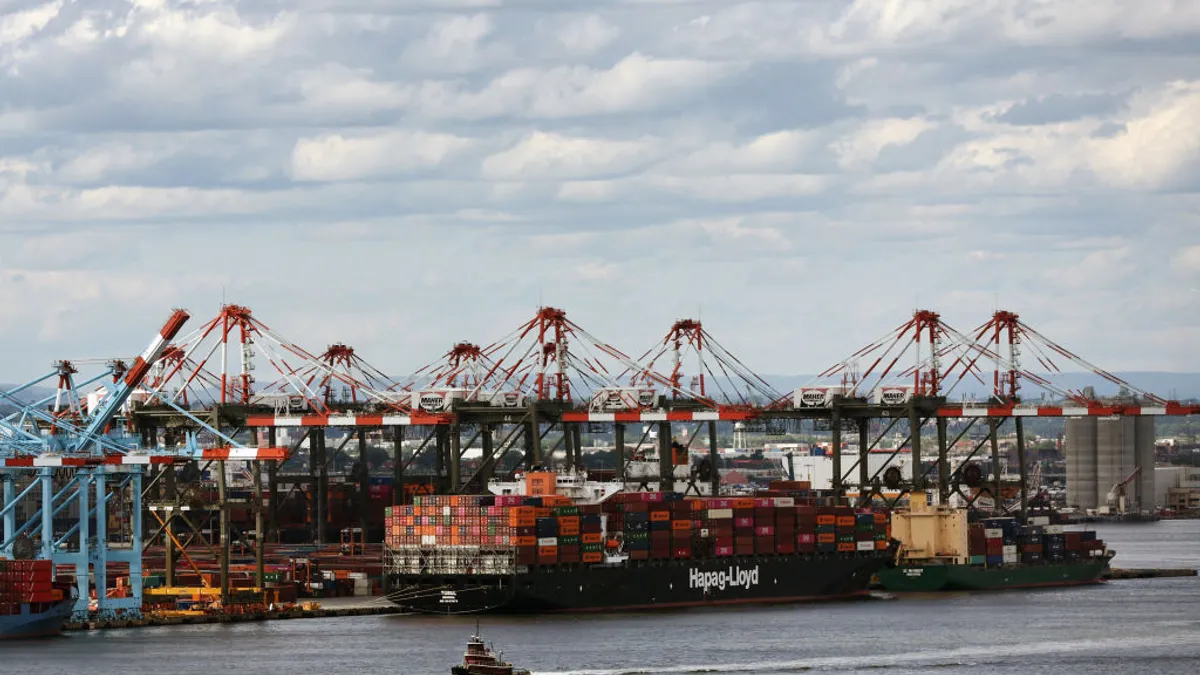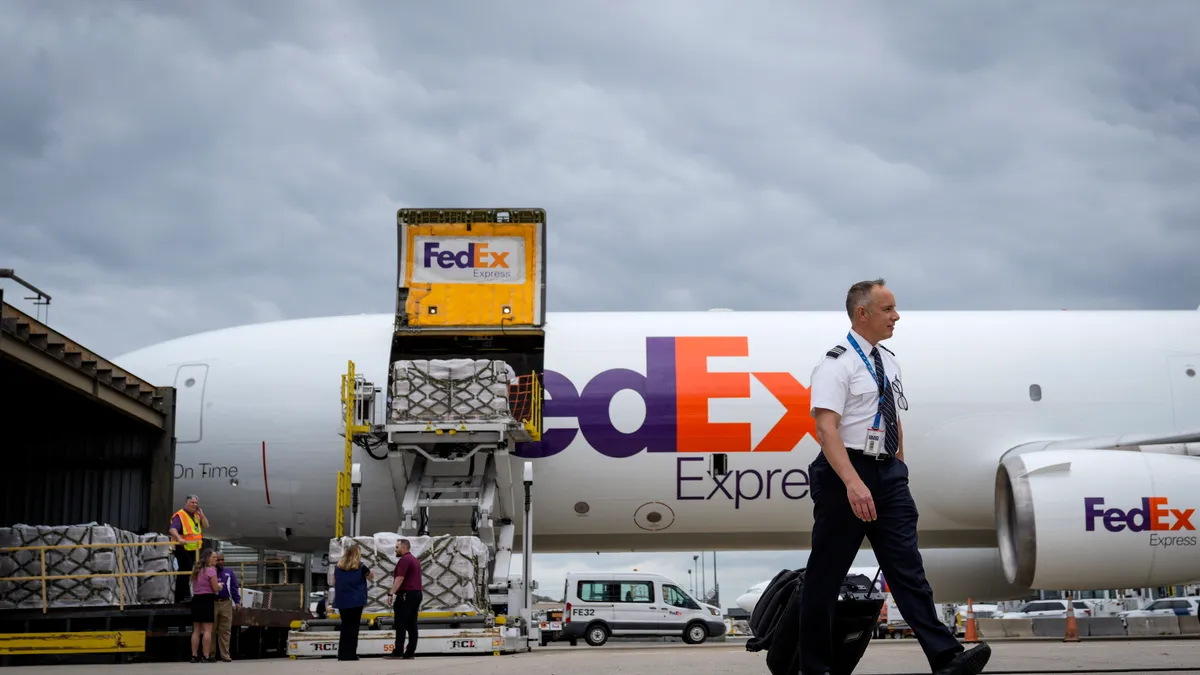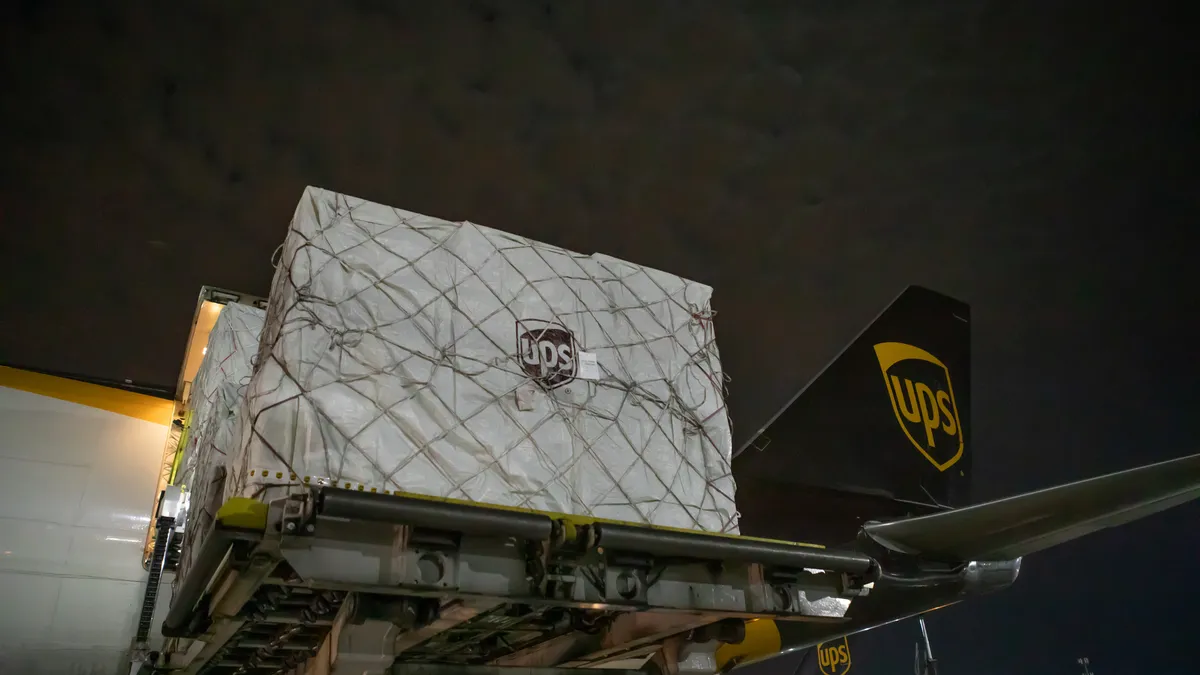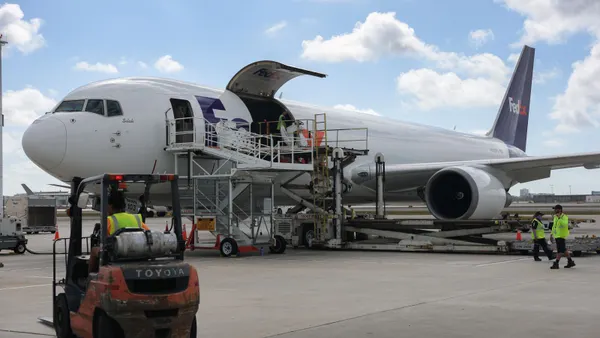Air freight demand is returning to seasonally-adjusted norms despite the short-lived International Longshoremen’s Association strike spurring cargo backlog earlier this month.
Since the potential for a strike was so widely publicized, many companies took early action to avoid possible disruptions, Marc Iampieri, global co-leader of the logistics and transportation practice at AlixPartners, told Supply Chain Dive.
Meanwhile, some shippers, like those handling perishable goods, shifted from ocean freight to air transport in the days leading up to the strike, said Balika Sonthalia, senior partner and practice lead for Kearney’s strategic operations practice in the Americas.
Other shippers waited to see how long the strike would last before shifting to air cargo as an alternative mode, said Brian Bourke, global chief commercial officer at Seko Logistics.
Although the ports quickly reopened following a tentative wage agreement and extension of master contract negotiations, the three-day work stoppage did leave ripple effects, especially for ocean shippers. The Port of Savannah, for instance, will need extra time to “restore full fluidity,” as the strike added to the backlog spurred by Hurricane Helene’s impact in September, according to an Oct. 15 market update from Freightos.
While the post-strike impact on the air cargo market may be less severe, supply chains are still expected to take up to six weeks to fully recover, according to an Oct. 2 report from Xeneta.
“While we’ve dodged a major disruption this time, these challenges underscore the need for collaborative efforts and proactive solutions across the supply chain to maintain operational efficiency,” Airforwarders Association Executive Director Brandon Fried told Supply Chain Dive.
Ongoing impacts
Generally, for each day of the work stoppage, roughly a week is needed to recover operations, according to Fried. If the strike had lasted beyond three days, there would have been even more deleterious effects across an already-stressed air cargo market, prompting longer wait times and higher shipping costs.
However, despite avoiding a more disruptive scenario, the work stoppage has still spurred some operational hiccups.
“We should anticipate disruptions in the supply chain, increased shipping costs and pressure on inventory levels across industries,” Sonthalia said. “In the short term, especially for perishable items from these docks, we could see higher prices at grocery stores.”
Sonthalia added that the strike may also prompt some companies to reevaluate their labor strategies.
While there was a brief increase in air freight demand and uptick in spot rates during the strike, Iampieri noted that it is challenging to isolate the event’s actual effect because of seasonality.
"We should anticipate disruptions in the supply chain, increased shipping costs and pressure on inventory levels across industries."

Balika Sonthalia
Senior partner and practice lead for Kearney’s strategic operations practice in the Americas
“The recent three-day strike got the message across that the union is prepared to fight for their members, including using work-stoppages as part of the process,” Iampieri said. “So, a lot more disruptions may be in store down the road.”
However, there shouldn’t be much long-term impact as long as conditions remain the same ahead of the new Jan. 15 master contract agreement deadline, Bourke said.
Depending on backlog and congestion levels at ports over the next few weeks, shippers may still shift to air freight, especially for e-commerce goods like apparel, consumer electronics and cosmetics, he added.
Preparing for January
Unless the United States Maritime Alliance gives up on automation during ongoing negotiations with the ILA, there is real risk for a repeated work stoppage, Iampieri said. In turn, the long-term impact of a second strike may be more severe if a master contract agreement isn’t reached by the January deadline.
But with previous mitigation plans ahead of the October work stoppage proving to be successful, experts say repeating such strategies may help avoid any further turbulence.
Iampieri advised shippers to be prepared to shift some volumes away from the East Coast and pull shipments forward ahead of January. “They should also have a plan B fully mapped out and vetted — especially if the next strike lasts for a lot longer than three days.”
Companies should also monitor inventory levels, especially for perishable items, communicate with suppliers about upcoming deadlines and impacts, and explore other logistics options to mitigate risks, Sonthalia said. She further noted that there could be higher shipping costs, and that companies should plan accordingly to reduce the cost spikes.
"They should also have a Plan B fully mapped out and vetted — especially if the next strike lasts for a lot longer than three days.”

Marc Iampieri
Global co-leader of the logistics and transportation practice at AlixPartners
“Build optionality on the inbound with product flowing into the domestic network with a dual port strategy,” she added.
Similarly, Bourke suggested that shippers monitor the negotiations and start on mitigation strategies prior to the January deadline.
“We are hopeful for a successful resolution and encouraged by the news of the strike ending, but until a contract is agreed upon and signed, any importer or exporter should continue to follow this closely into January, especially leading up to the Lunar New Year,” Bourke said.



